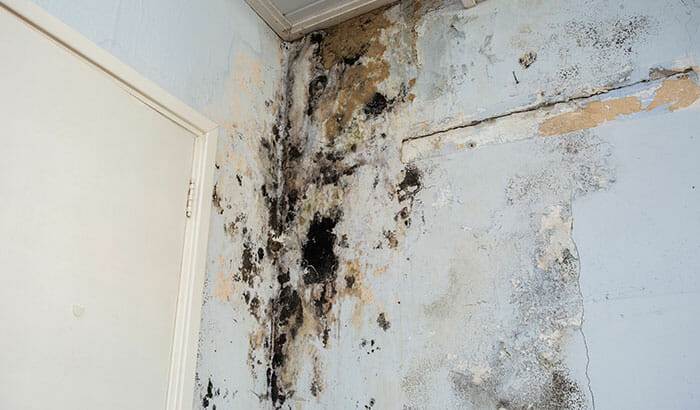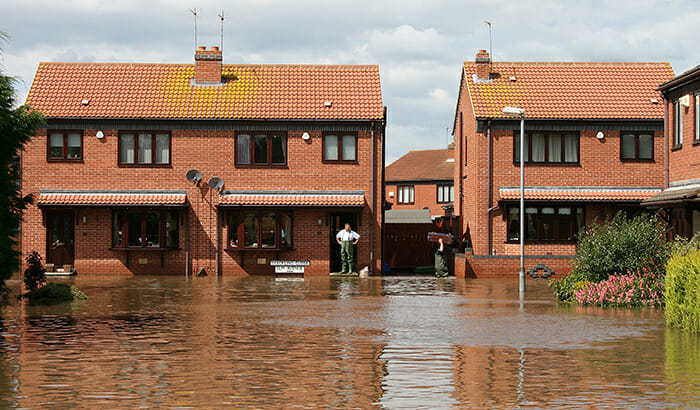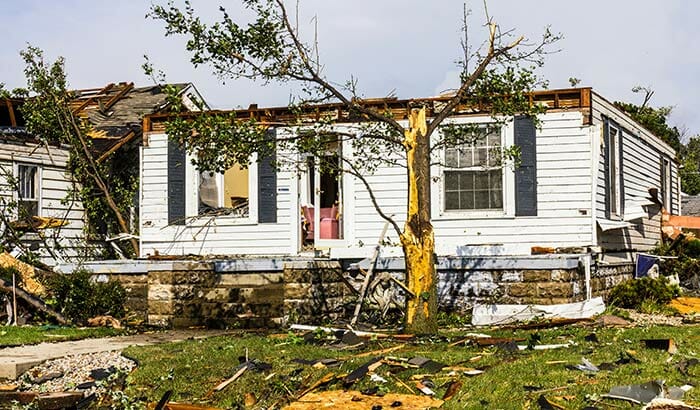Have you found mold in your home? Are you curious about what causes that mold to grow?
Before we start, remember that mold in a home will not pay you rent, so don’t allow it to be a problematic tenant in your home.
Mold is sneaky and capable of setting up camp in just about any place in your home. However, it is most commonly found in basements, bathrooms, cabinets, kitchens, and pipes.
It can also be a stealthy fiend in problem areas, such as behind drywall, wood, and cotton elements. But the most significant fact to be aware of is that mold loves to grow in areas that contain moisture. So when the temperature is just right (on the warmer side), and it collides with moisture and oxygen, mold sees this as a perfect spot to grow in.
Here are some of the most common causes of mold in homes:
Humidity
If you live in an area with high humidity, you are at a greater risk of having a mold issue. In addition, people who have homes near the ocean or large bodies of water need to be sure that their home has ventilation.
Leaky Roof
Perhaps your roof has been damaged due to weather conditions, creating a place filled with moisture and quickly leading to mold build-up. Even if it is a small leak, over time, it will cause moisture to creep into the structure of your home, which invites mold to become an unwelcome guest in your walls and ceiling boards.
Condensation Build-Up
Again, where there is moisture, there is the possibility of mold growth. In addition, fluctuating temperatures may lead to condensation build-up on cold surfaces. This build-up is typically found on surfaces like metal pipes, floor tiles, concrete, and brick. Don’t allow pockets of condensation to become a breeding ground for mold spores.
Poor Ventilation
When your home is not adequately ventilated, it allows moisture to linger on, in, and around surfaces. In addition, the steam created from cooking, showering, or some appliance functions can leave surfaces sticky and damp. Keeping your home moisture free will keep the likelihood of mold growth at bay.
Leaky Pipes
A pipe that has sprung a leak (big or small) will have a persistent flow of moisture that sticks around and invites mold to grow on the surface. Leaky pipes can be unwanted contributors to the development of ceiling and wall mold.
A Damp Basement/Foundation Dampness
Because a basement is underground, it has the potential to fall victim to trickling rainwater and garden water overflow. If your home is experiencing these basement-related problems, you may have a bigger problem with your overall structure, and mold may be the least of your worries.
Perhaps the slope of your yard or the landscaping layout causes water to slowly migrate towards the base of your home’s structure (aka, the basement). You can avoid this challenge by doing routine maintenance on your landscaping and the basic construction of your home.
Wet and Damp Clothing
If you’ve ever done a load of laundry and left your wet clothing in the washing machine for a couple of days, you’ve experienced the “ew” odor they get when not properly taken care of. That smell can be an early warning sign of mold growth. Again, “ew.” So, try not to let clothing become an environment that mold will inhabit.
A Leaking Air-Conditioning System
Many homes feature an air conditioning system that can promote mold growth. This type of mold is known as Mucor. It is a quick-growing mold that is allergenic and comes about due to condensation build-up. Keep a close eye on the piping, ducting, and filter of your air-conditioning system, and you should be able to avoid mold.
What are some signs that you may have mold in your home?
- Musty/foul odor.
- Black spots on fibers within the home.
- Carpets showing signs of contamination.
- Excessive moisture where your water heater is stored.
- Unexplained allergy or asthma flare-ups.
- Mildew or fungus in your furniture.
- Bubbled or warped wallpaper or wall structure.
- Persistent cold or flu symptoms.
If you think you have a mold problem in your home and you are concerned about the health effects, here are a few symptoms to watch out for:
- Persistent cough.
- Throat irritation.
- Sinus and nasal congestion.
- Skin irritation.
- Eye irritation.
- Difficulty breathing.
- Headache.
If you have found yourself in the unfortunate situation of finding mold in your home and experiencing health symptoms, don’t worry. Here are some basic steps you can take to rid your home of mold:
- First, identify the source of moisture or dampness causing the problem.
- Any materials that feature extensive mold growth should be thrown away, such as carpeting, rugs, curtains, ceiling tiles, and drywall. Any materials that you cannot effectively clean should be immediately discarded.
- Warm water and soap can usually be effective when cleaning item surfaces in small areas. This is doable on your own. However, larger areas are best left to be cleaned by a professional.
- Rubber gloves and a mask are highly recommended for areas that require deep cleaning.
- If you have areas that prove to be challenging to eliminate the moisture source, you may want to dilute chlorine bleach with water to get the tough job under control. But, you must remember that a cleaning solution is only half the battle. Once you have cleaned the area, you’ll need to ensure it is well-ventilated.
- Letting air circulate throughout your home will not only help areas you have cleaned dry before more mold growth is found, but it will also help rid your home of a stinky situation.
- Keep an eye on any areas showing signs of new mold growth. This may indicate that further repairs and material removal may become necessary.
If you find yourself in a situation where mold has set up shop in your home, it may be time to call a professional. At Bull Matrix Restoration, you’ll feel comfortable allowing the best of the best to come and rid your home of harmful mold growth. Contact us today and start the process of removing harmful mold from your home.



